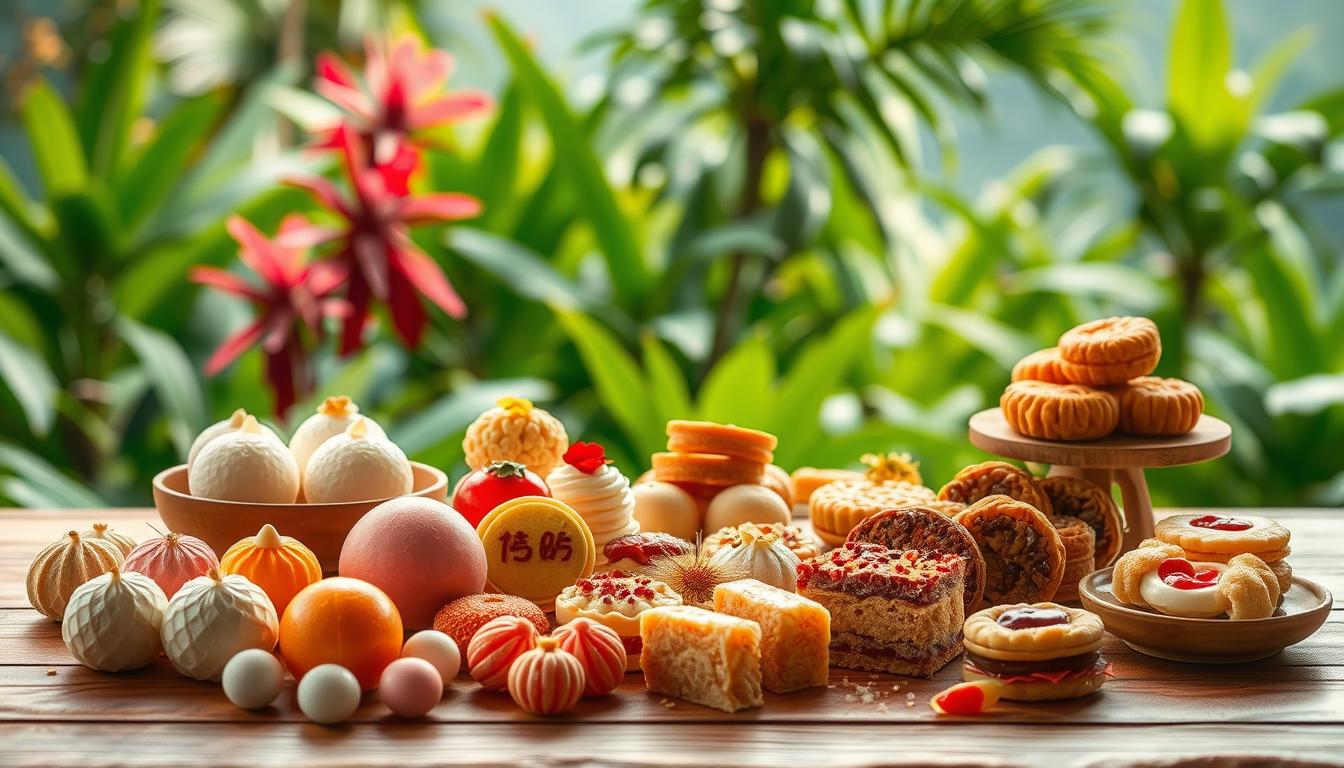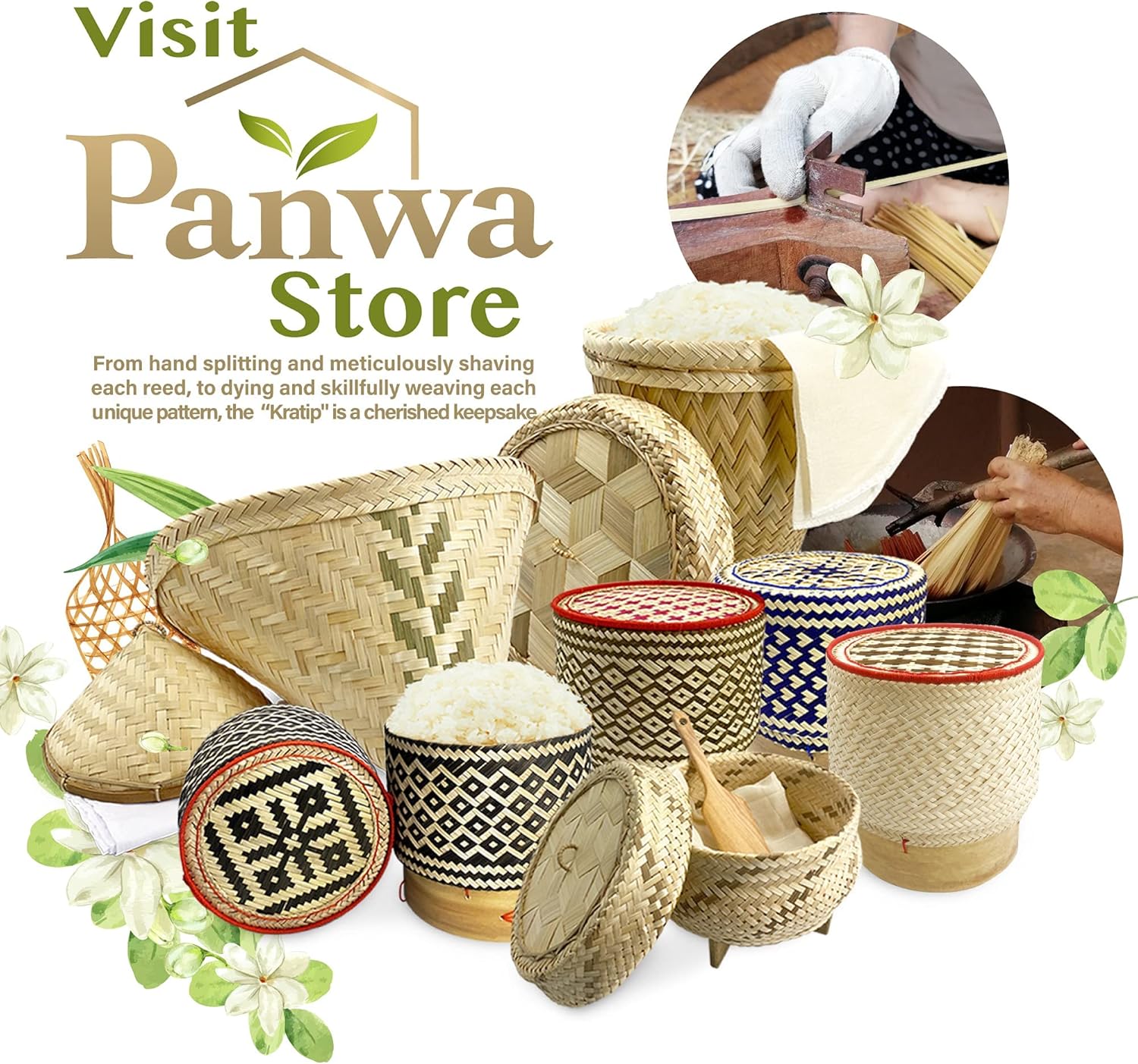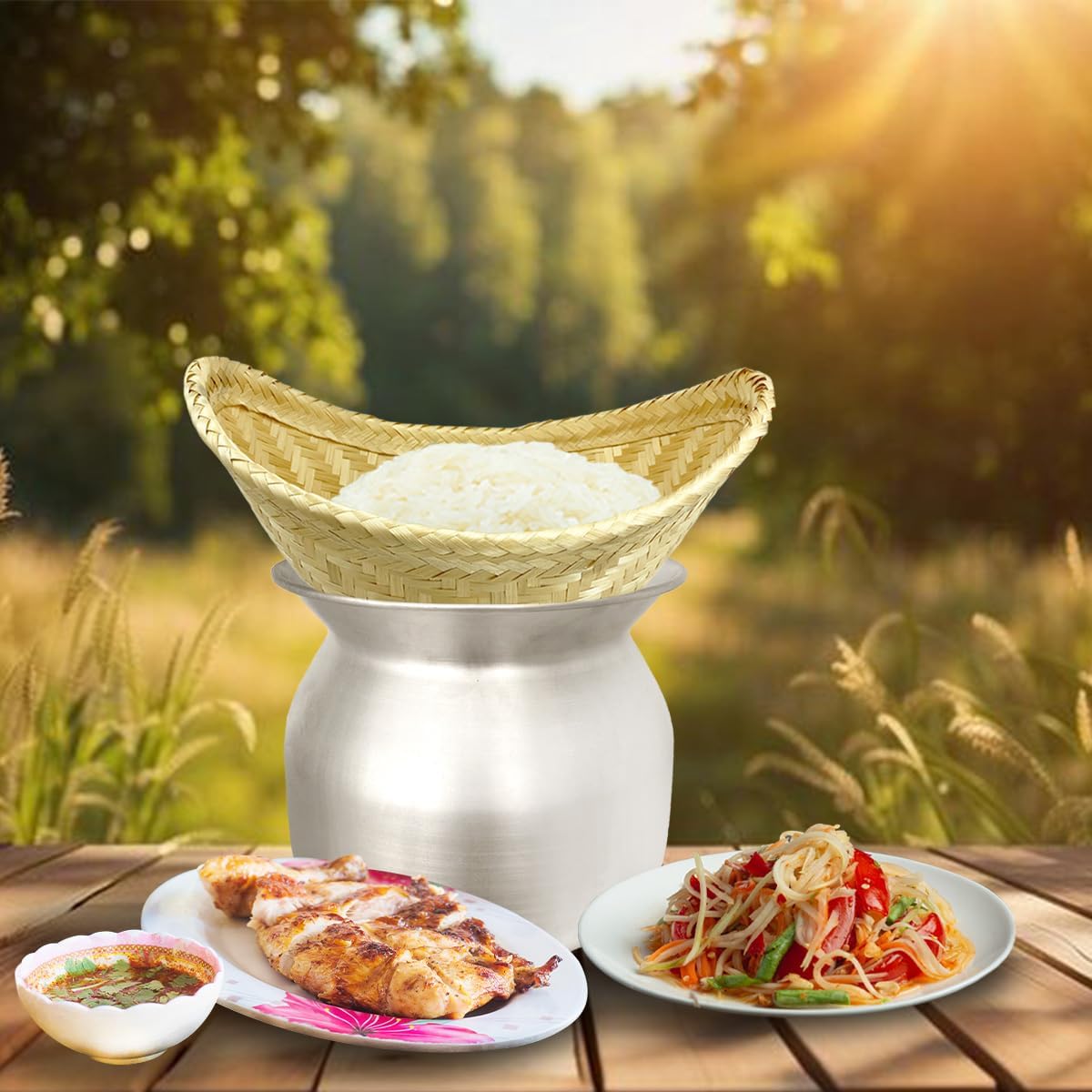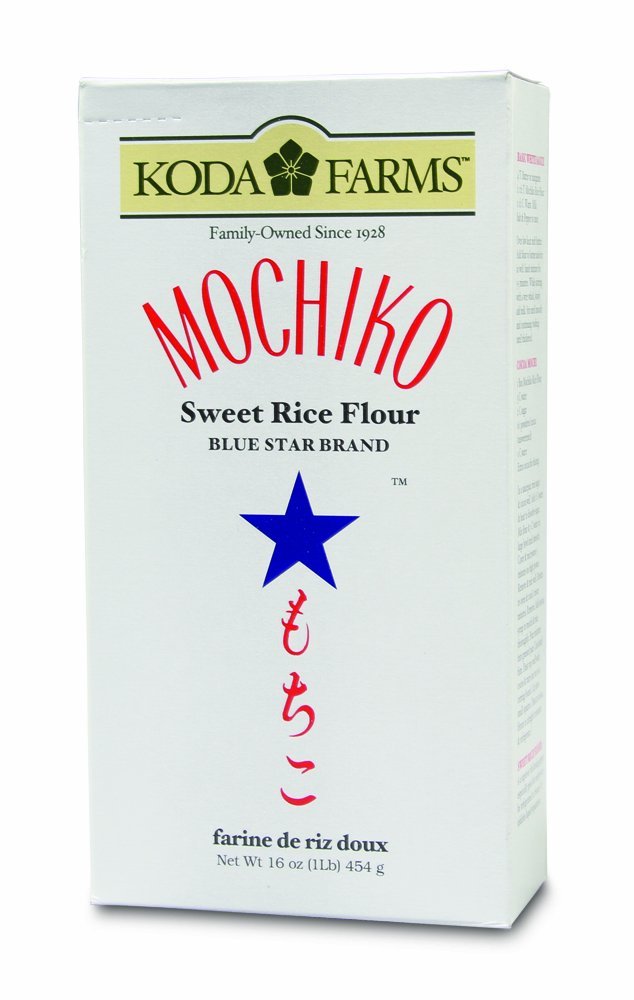Imagine stepping into a world where every sweet bite tells a story. Asian desserts are more than treats; they’re journeys through centuries of rich heritage. From Bangkok’s markets to Kyoto’s tea houses, these desserts capture their origins in every bite.
Exploring Asian desserts, you’ll find a world of flavours and textures. These reflect the unique cultures of each region. These sweets are not just foods but living stories of history and family.
Each dessert has its own tale of ingredients and preparation. The flavours and meanings behind them are deep. They are true treasures waiting to be enjoyed.
Key Takeaways
- Asian desserts represent a profound culinary narrative beyond simple sweets
- Every dessert tells a unique story of cultural heritage
- Ingredients and preparation methods vary widely across different Asian regions
- Traditional techniques remain central to authentic asian food desserts
- Desserts often symbolise deeper cultural and familial connections
Understanding the Rich Heritage of Asian Desserts
Asian desserts are more than just sweet treats. They are a journey through culture, showing centuries of innovation and diversity. Each dessert reflects the traditions and tastes of its region.
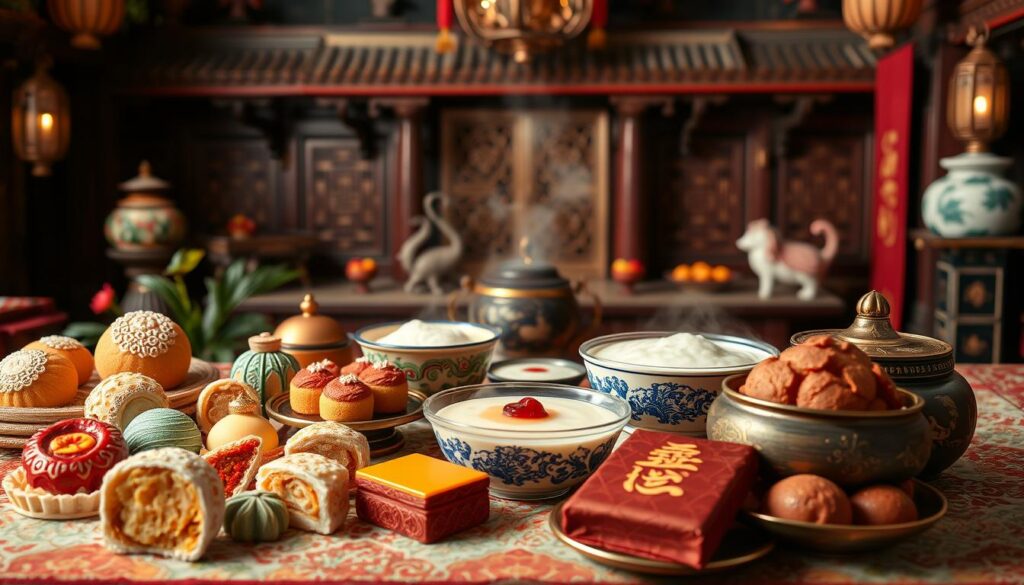
Exploring dessert Asia, you find a world where food tells stories. Each dessert has its own tale of ingredients, history, and traditions.
Cultural Significance in Celebrations
Asian desserts are key in cultural celebrations. They are not just food but a part of important events:
- Mooncakes symbolise family reunions during the Mid-Autumn Festival
- Tangyuan (sweet rice balls) represent togetherness during the Lantern Festival
- Nian Gao signifies growth and success during Chinese New Year
Traditional Ingredients and Techniques
“In Asian cuisine, desserts are crafted with intention, using ingredients that reflect local agricultural traditions and cultural preferences.”
Traditional ingredients in Asian desserts are diverse:
- Rice flour and glutinous rice
- Coconut milk
- Palm sugar
- Exotic fruits like mango and durian
- Sesame seeds
- Red bean paste
Regional Variations Across Asia
Desserts in Asia vary greatly. From Cantonese egg tarts to northern Chinese walnut cookies, each region has its own sweet traditions. These reflect local tastes and available ingredients.
Understanding these desserts gives us a glimpse into Asian culture through food.
Mango Sticky Rice: Thailand’s Beloved Sweet Treasure
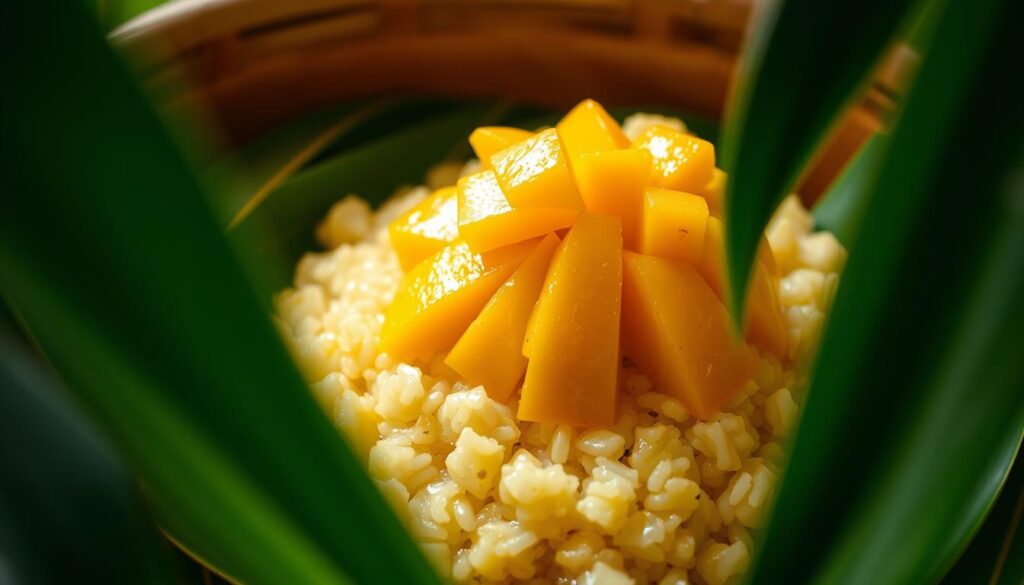
Explore the charm of a beloved dessert in Thai cuisine. Mango sticky rice, or Khao Niew Ma Muang, is a sweet treat. It shows how simple ingredients can create amazing flavours.
This dessert mixes warm glutinous rice with coconut milk and ripe mango slices. In Thailand, from April to June, it’s a hit in markets and restaurants. It’s a cultural favourite.
- Typical ingredients include glutinous rice, coconut milk, and fresh mangoes
- Often garnished with toasted sesame seeds or shredded coconut
- Served both at street food stalls and high-end restaurants
Nearly 90% of tourists in Thailand try this dessert. It’s a mix of warm sticky rice and cool mango. This makes it a hit with food lovers everywhere.
A culinary masterpiece that represents the essence of Thai sweet cuisine!
In Bangkok’s markets or fancy restaurants, mango sticky rice is a must-try. It’s a true taste of Thailand’s dessert culture. Its fame is spreading, with people around the world loving it.
Japanese Soufflé Cheesecake: A Cloud-Like Delicacy
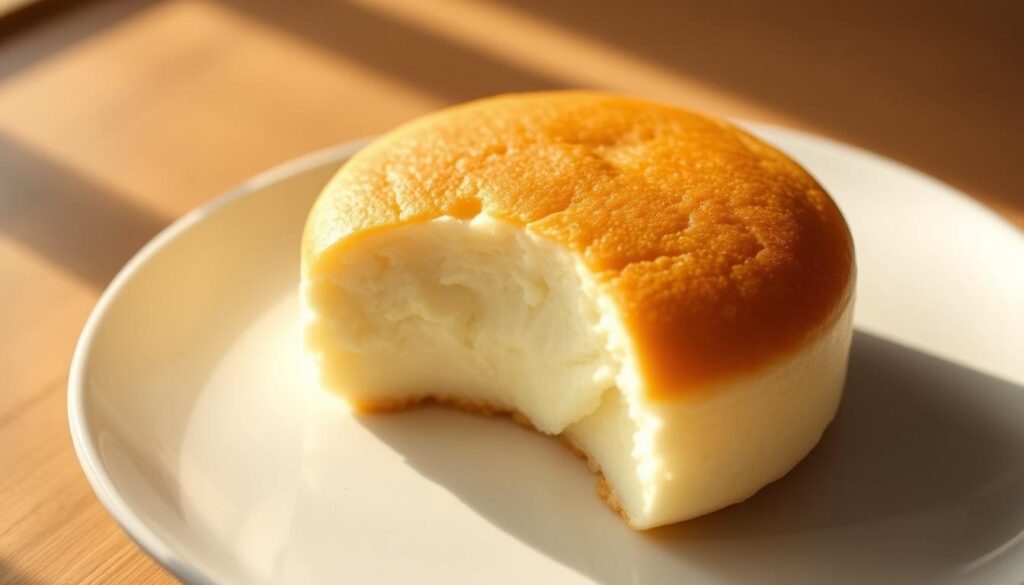
Japanese soufflé cheesecake is a unique treasure in the world of desserts. It turns the traditional cheesecake into a light, airy treat. This dessert is unlike dense Western-style cheesecakes, offering a cloud-like texture that has won hearts globally.
Crafting the Perfect Texture
Making the perfect Japanese soufflé cheesecake needs precision and skill. The secret is in several key techniques:
- Whipping egg whites to soft peaks
- Gently folding ingredients to keep air in
- Using a water bath during baking
- Carefully separating dry and wet ingredients
Mastering Temperature Control
Temperature is key to getting the signature jiggly texture. Bakers must:
- Preheat the oven precisely
- Use a low, consistent temperature
- Avoid opening the oven during baking
- Cool the cake gradually to prevent deflation
“A perfect Japanese soufflé cheesecake is like an edible cloud – light, delicate, and utterly irresistible.”
Serving Suggestions
To fully enjoy this delightful dessert, serve it slightly chilled. A light dusting of powdered sugar or a small dollop of whipped cream can enhance it. Some like to pair it with fresh berries or a delicate fruit compote to match its subtle sweetness.
Hong Kong’s Famous Mango Pancakes

Explore the world of Hong Kong’s beloved mango pancakes. These delicate treats blend chinese baking with tropical flavours. They show the creativity of Hong Kong’s food scene.
Mango pancakes are a key part of Asian desserts. They mix soft crepes with rich fillings. You’ll find them in dim sum places, where chefs make thin crepes with whipped cream and mango.
- Preparation time: Approximately 15 minutes
- Cooking time: Around 20 minutes
- Yield: 6-9 pancakes per batch
- Key ingredients:
- 3 large ripe mangoes
- 350ml double cream
- Plain flour
- Eggs and milk
The secret of these pancakes is their thin, soft texture and balanced taste. Chefs pick the sweetest mangoes for them. The crepes are made to be very thin, needing careful temperature and skill.
A culinary masterpiece that bridges traditional chinese baking with modern dessert innovation!
These pancakes are a treat with about 434 calories each. They’re not just a dessert but a celebration of Hong Kong’s food culture.
Enjoy mango pancakes during the Lunar New Year or as a summer treat. They show that Asian desserts can be both traditional and amazing.
Matcha-Based Treats: From Traditional to Trendy
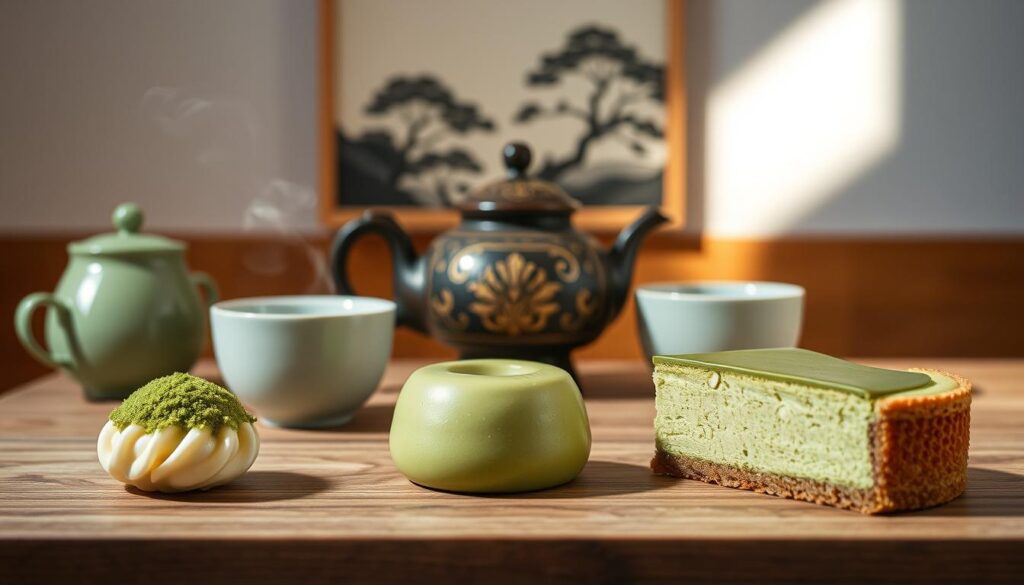
Matcha has moved from being a key part of Japanese tea ceremonies to a worldwide favourite in desserts. This bright green powder adds a special taste that draws in food lovers everywhere.
Matcha’s versatility shines in many desserts. It goes from traditional wagashi to new, mixed treats. It offers a unique taste that mixes old traditions with today’s food.
- Matcha ice cream with its perfect balance of earthy and sweet notes
- Crisp matcha green tea cookies
- Innovative matcha donuts
- Delicate matcha roll cakes
- Refreshing matcha shaved ice
When picking matcha for your desserts, choose high-quality. Opt for Japanese matcha that’s bright green. This ensures the best taste and true matcha flavour.
Matcha isn’t just a flavour—it’s a culinary experience that connects tradition with modern gastronomy.
Matcha is perfect for both experienced bakers and dessert lovers. It opens up a world of possibilities for making unforgettable desserts. These desserts will excite your taste buds and celebrate the art of food.
Sesame Balls: Ancient Chinese Sweet Delicacy
Explore the world of chinese baking with sesame balls. These treats have been a favourite for centuries. They started in the Tang dynasty in Chang’an (now Xi’an) and are loved across Asia.
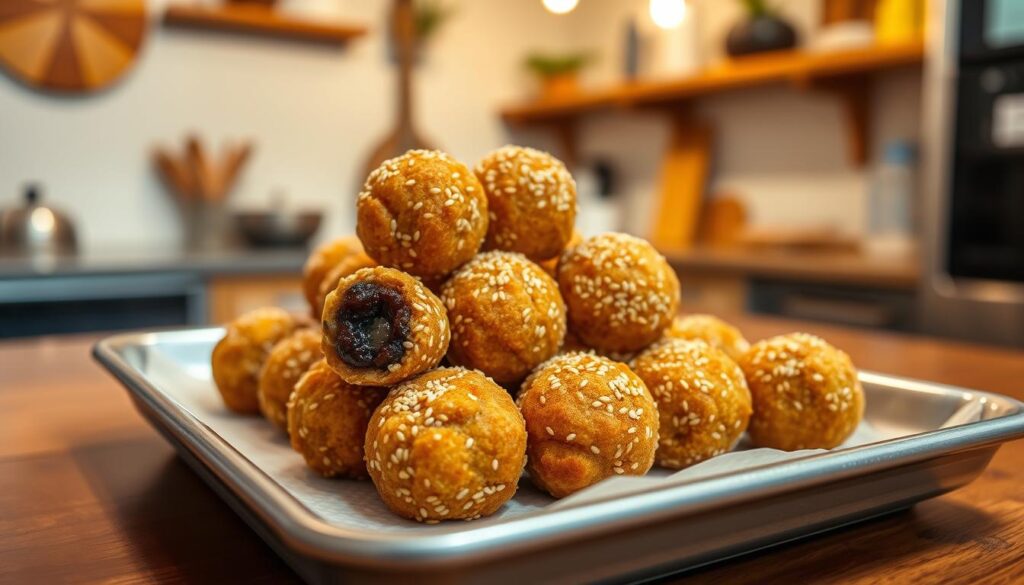
Sesame balls are known as matuan and mayuan in different places. They mix textures and flavours perfectly. Made from glutinous rice flour and covered in white sesame seeds, they have a crispy outside and a soft inside.
Traditional Preparation Methods
Making sesame balls needs skill and care. The dough must be soft but not sticky. It’s made with:
- 130g glutinous rice flour
- 65g white sugar
- 95g white sesame seeds
- Sweet fillings like red bean or lotus seed paste
Regional Variations
Sesame balls vary across Asia. In Hong Kong, they’re a common pastry. In Japan, they’re called goma dango. Other countries have their own versions:
- Korea: Called jungguksik chamkkaegyeongdan
- Malaysia: Known as kuih bom
- Vietnam: Similar to bánh cam and bánh rán
Cultural Significance
Sesame balls mean more than just a snack. They’re a big part of Chinese New Year, symbolising reunion and good fortune. Making them connects families across generations, keeping a tasty tradition alive.
Conclusion: Embracing Asian Dessert Culture
Exploring Asian desserts is a journey that goes beyond just sweet treats. These desserts tell stories of rich cultures, mixing old traditions with new tastes. They are more than just food; they are a way to connect with different cultures.
In dessert Asia, you find a world of unique tastes. Japan’s soft mochi and Vietnam’s creamy chè are just the start. These desserts show off the special ingredients and textures of each region. They are becoming more popular, bringing people together through food.
Trying Asian desserts is more than just eating. You can find vegan and gluten-free options too. Whether you’re trying street food in Bangkok or making it at home, these desserts open a window into Asia’s culinary world.
Asian desserts are leading the way in food innovation. They are not just sweet treats but also living traditions that grow and stay true to their roots. Discover these culinary wonders and let your taste buds travel through the rich world of Asian desserts.
FAQ
What makes Asian desserts unique?
Are Asian desserts typically very sweet?
What are some popular ingredients in Asian desserts?
Are Asian desserts difficult to make at home?
How do Asian desserts differ across regions?
Are Asian desserts healthy?
What is the cultural significance of desserts in Asian cuisine?
How are Asian desserts becoming popular globally?
Can people with dietary restrictions enjoy Asian desserts?
What is the best way to experience authentic Asian desserts?
5 Must-Try Asian Food Desserts and Their Origins
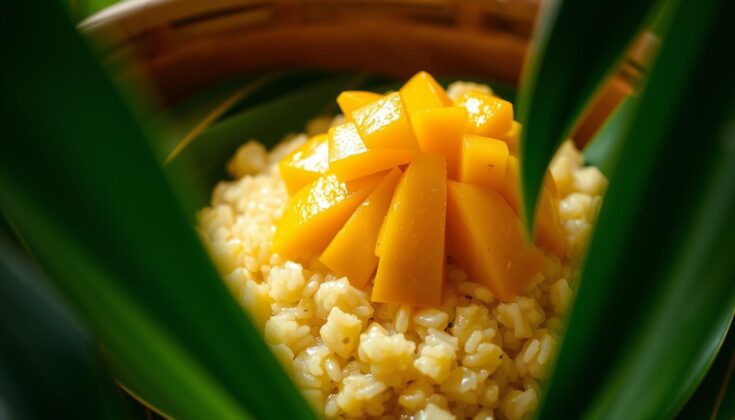
A classic Thai dessert that perfectly balances warm, sweet coconut-infused sticky rice with juicy, buttery mango slices. It’s a delightful mix of flavours and textures that always satisfies, just like my favourite mango sticky rice recipe below!
Ingredients
- 2 cups long-grain white sticky rice (sweet rice or glutinous rice)
- 2 cups (or 1 can) coconut milk (Chao Koh brand recommended)
- ½ cup granulated sugar
- 1 tsp salt
- Optional: 3-4 fresh or frozen pandanus leaves (bai toey) or a few drops of jasmine essence
- 1-2 ripe mangoes, peeled and sliced
Instructions
- Rinse the sticky rice once or twice, then cover it with 2-3 inches of water and soak for at least 4 hours or overnight.
- Drain the rice and place it in a bamboo steamer basket over 2-3 inches of water in a steaming pot. Cover with a small lid and steam for 40-45 minutes until fully cooked.
- While the rice steams, prepare the coconut sauce by heating coconut milk with sugar and salt until fully dissolved.
- Once the rice is ready, transfer it to a bowl and mix in half of the coconut sauce.
- Slice the mango and serve it alongside the sticky rice, drizzling more coconut sauce on top before serving.
Recommended Products
Nutrition Information:
Yield: 4 Serving Size: 1Amount Per Serving: Calories: 377Total Fat: 4gSaturated Fat: 2gTrans Fat: 0gUnsaturated Fat: 2gCholesterol: 10mgSodium: 785mgCarbohydrates: 81gFiber: 3gSugar: 57gProtein: 7g
Nutrition information is automatically calculated, so should only be used as an approximation.
LEAVE A COMMENT
Your email address will not be published. Required fields are marked *
COMMENTS
Delicious 😋, and healthy recipe.

